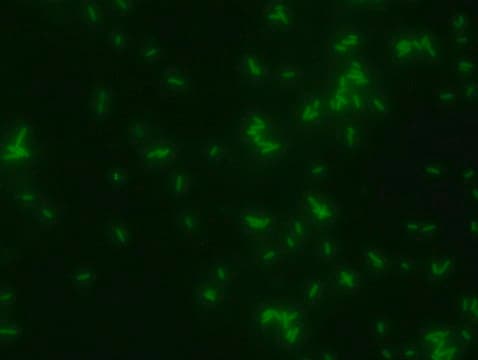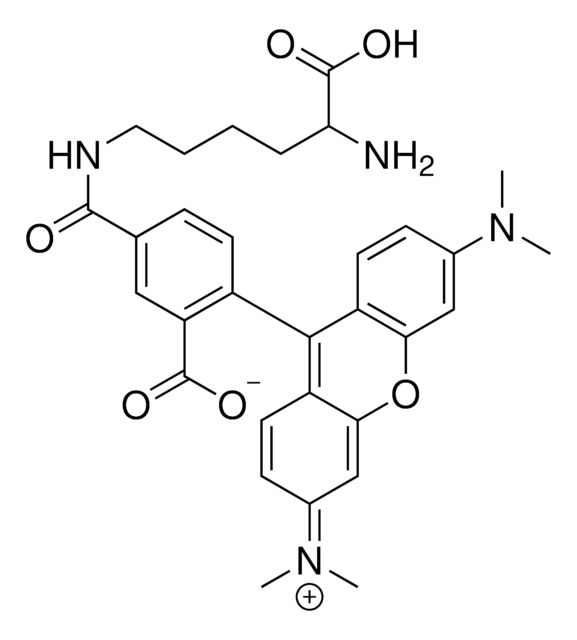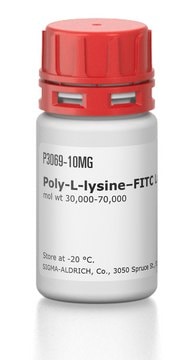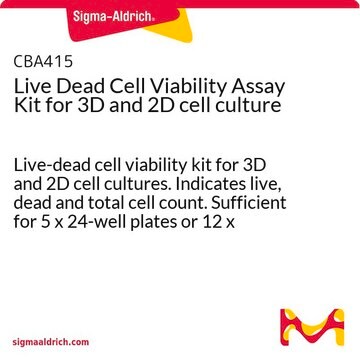SBR00050
FITC Labeled D-Lysine
Suitable for bacterial labeling
Sinônimo(s):
FADL, FDAA
Selecione um tamanho
Selecione um tamanho
About This Item
Produtos recomendados
Nível de qualidade
temperatura de armazenamento
−20°C
Descrição geral
Aplicação
- Bacterial cell wall morphology
- Bacterial cell wall formation or remodeling activity
- Bacterial viability/activity
- Identify bacterial activity on surfaces or in substances
- Differentiation betweenvarious bacterial strains according to their incorporation profile of differentD amino acids and sugars
Nota de análise
- Fluorescent microscopy application: Fluorescein Labeled D-Lysine has excitation/emission wavelength range at 495 nm/515 nm.
- The recommended working concentration in fluorescent microscopy imaging application is between 250μM-500 μM in DMSO.
- Aliquots of the DMSO solution can be stored at -20°C, protected from light for at least one month.
Código de classe de armazenamento
11 - Combustible Solids
Classe de risco de água (WGK)
WGK 3
Ponto de fulgor (°F)
Not applicable
Ponto de fulgor (°C)
Not applicable
Escolha uma das versões mais recentes:
Certificados de análise (COA)
Não está vendo a versão correta?
Se precisar de uma versão específica, você pode procurar um certificado específico pelo número do lote ou da remessa.
Já possui este produto?
Encontre a documentação dos produtos que você adquiriu recentemente na biblioteca de documentos.
Active Filters
Nossa equipe de cientistas tem experiência em todas as áreas de pesquisa, incluindo Life Sciences, ciência de materiais, síntese química, cromatografia, química analítica e muitas outras.
Entre em contato com a assistência técnica








